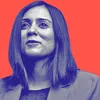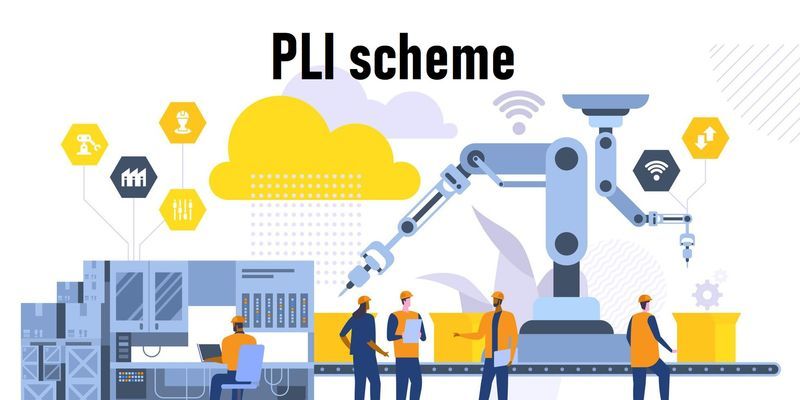[YS Learn] Lessons on building successful teams from second-time entrepreneur Mohit Aron
Hiring is one of the most challenging tasks for any founder, especially if it is for a first-time founder. Mohit Aron, Founder and CEO of Cohesity and previously Co-founder and CTO of Nutanix, shares his experience of building great teams for two successful companies.
Mohit Aron is a big name in Silicon Valley and tech circles. Originally from Chandigarh, India, Mohit was one of the early engineers at Google in 2002, where he was a part of the team that built the Google File System, which the tech giant relies on for storing data and access.
He is also referred to as the father of hyperconvergence, which was the main technology of his product at his first startup - Nutanix (a listed company with a valuation of over $5 billion.)
While doing his PhD, Mohit built the first scalable web server, and the concepts of his research were used by IBM, the company that was running the web server for the Olympics in the late 90s. Before he graduated in 2000, Mohit researched the quality of service in distributed systems. It was these concepts that he put to use in building the Google File System later in 2002.
Before hyperconvergence, people had to buy computer servers from one vendor, buy storage from a different vendor, connect the two with expensive networking and then run applications. This meant juggling between three different vendors, making it hard to manage and expensive. The concept of hyperconvergence is to collapse all of that into one platform.
As the CTO of Nutanix, Mohit learnt how to build a great technical team, but at , he learnt how to build a great business team.
Edited excerpts from the interview:

Mohit Aron, Founder & CEO, Cohesity
YourStory (YS): What is the difference between building a technical team and a business team?
Mohit Aron (MA): Building a technical team is different from building a business team. While hiring an engineer, you ask programming puzzles and get a sense of whether they are good or not. But in the case of a sales person, you can’t judge that easily. The sales guys know how to sell. How do you judge if they are good sales guys? One of the most important things I have learnt in hiring business people is back channel referencing.
A person can come across as very likeable and charismatic, and one always ends up taking references from bosses or ex-bosses. But sometimes, the ex-bosses hide information because they wish the person well.
My rule is that I always make sure I check references from the candidates’ peers and people who reported to them. These people have little incentive to hide any negatives.
YS: How do you look at hiring now? What do you look for in people?
MA: Hiring for me is very role dependent. We have built a process called competency based hiring. Before we hire a candidate, we have to write down a checklist of competencies for a role. For example, if I am hiring the VP of engineering, one of the competencies we look for is that they have managed big teams before, and are familiar with the tools used to manage engineering.
This list goes into a scorecard. We have three scorecards. One scorecard is used for a resume match, like a pre-interview scorecard. If a recruiter is looking to find a candidate, they fill a scorecard where they will check factors like education, experience within a fast-paced company, stability, and not much job-hopping.
If the scorecard is rated highly, the candidate is then brought in for an interview. This is where the next scorecard or the interview scorecard comes into play. The interviewer scores the candidate next, and then an average is calculated.
The third scorecard is the reference check scorecard. This is where I do reference checks, where I ask questions like - would you hire this person again? Was this person liked by your team members? Is he/she a good culture fit? And then we score that.
Each candidate gets three scorecards, which gives us a picture if we want to make an offer or not. The idea is to interview a number of candidates and whoever scores the highest is the person who gets the job. It is very data driven. The scoring eliminates personal biases and preferences.
YS: Tell us your learnings on hiring and how do people matter?
MA: It is always about the people. It is about how well you hire, and effective performance management. No matter how good you are at hiring, you will make mistakes. So at Cohesity, we look at performance closely.
When you hire someone you have to work to continuously improve that person’s skills. How do you go about doing that? And if someone is not working well, find those people and move them suitably or out. We use the same scorecard system. But it just has one scorecard.
We lay out all the skills that we need for the role, and everyone who has worked with the person rates them on those skills. Based on that, everyone gets scored and it gives us an idea of how everyone is functioning.
The objective is that anyone who isn’t functioning well, we first try to help them - feedback, training, mentoring, giving them resources, changing managers, moving them to different fields. But if things don’t work, the last resort is to part ways.
In my mind, it is a big disservice to the company to retain people who aren’t working well, and we cannot elevate them. They too could be unhappy in the company.
I strongly believe in a performance oriented culture. It is always about the people and the team dynamics. The more we can finesse those, the better it is for the company. Even in times of the pandemic, we make sure we communicate with our employees, and they are well-equipped for doing their jobs.
Companies are about innovation, and if that stops, it gets taken over by competition. We want to make sure we hire the best engineers and give them whatever they need to do their jobs. And this holds true even for the business people.
We spend more time at the companies than with our families on a regular day. This is a family away from family, so we need to make sure that they are happy.
YS: What is the core learning you bring from Nutanix to Cohesity?
MA: In my second company, I have realised it is all about the team. It is here that I also learnt how to act like a leader. As engineers, we tend to believe we can move mountains ourselves. But no matter how good you are, it is always about the team. The more you can facilitate, enable and improve the team, the better off you are. If the team works well with each other then you can move mountains. I have had to shift my mindset into the importance of the team.
It is never about the ‘I’, it is all about the ‘We’.
YS: What are your learnings as a leader and what do you expect out of leaders?
MA: While leaders are also humans, we don’t have the luxury to display a wide range of emotions. A very emotional leader makes bad decisions. And you have to be measured in the emotions you show. If I am giving feedback to a leader and they become defensive, it also is an emotion. That isn’t a good sign of leadership. It all needs to be data driven, and I like leaders to be data driven.
While gut feel plays an extremely vital role, try to back that gut feel with data. Never ignore the instinct, but don’t blindly follow it too.
Edited by Anju Narayanan






![[YS Learn] Lessons on building successful teams from second-time entrepreneur Mohit Aron](https://images.yourstory.com/cs/2/a9efa9c02dd911e9adc52d913c55075e/Image4s3f-1605003214957.jpg?mode=crop&crop=faces&ar=2:1?width=3840&q=75)





